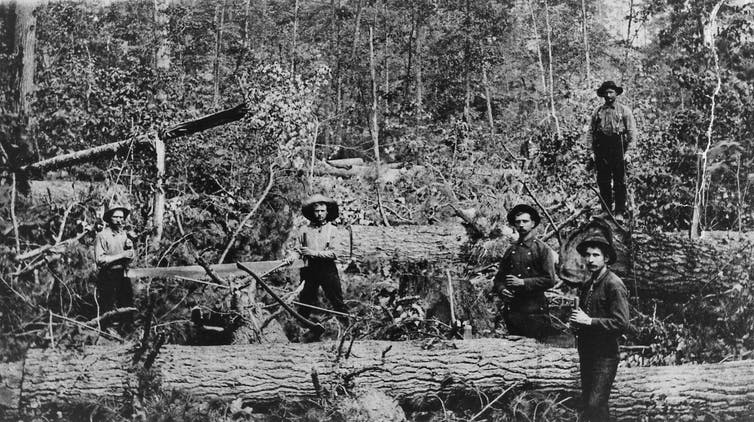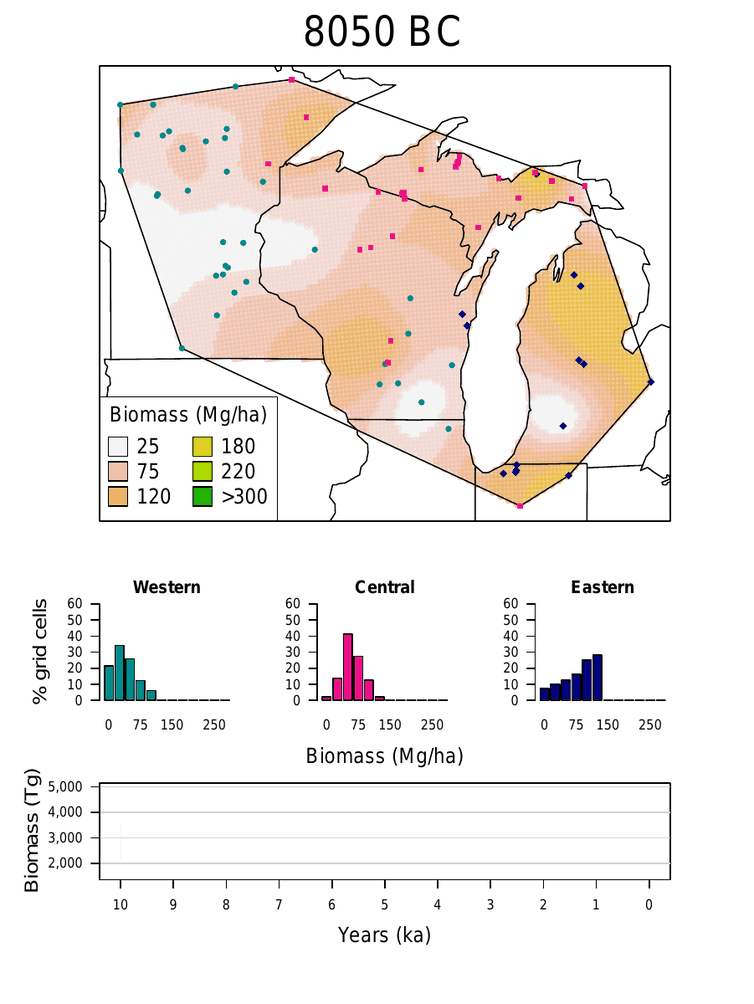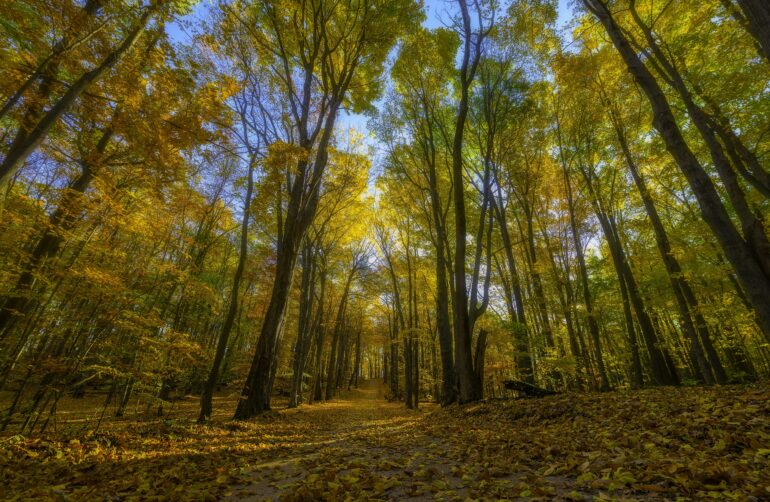“Plant a tree” seems to be the go-to answer to climate change concerns these days. Booking a rental car online recently, I was asked to check a box to plant a tree to offset my car’s anticipated carbon dioxide emissions. In 2020, the governor of my state, Indiana, launched an initiative to plant a million of them within five years, and the state is a quarter of the way there.
The primary reason for this arboreal zeal is to capitalize on the power of trees to remove excess carbon dioxide from the atmosphere and turn it into wood, safely locking carbon away for decades to centuries.
That’s the theory, anyway.
The problem is that the fate of carbon stored in trees faces many challenges. Heat waves, logging, pests and wildfires can all destroy trees and release that carbon again. And most measurements of the carbon stored in forests’ woody biomass only extend back a few decades.
I lead the PalEON project, an initiative funded by the National Science Foundation that is working to reconstruct how the amount of carbon stored in U.S. trees ebbed and flowed over the past 10,000 years.

Loggers in 1900 cut down trees in what is now Michigan’s Huron-Manistee National Forests.
Forest Service
Our new reconstruction reveals in detail how forests in the upper Midwest gained almost a billion tons of carbon over the last 8,000 years, doubling their carbon storage. And then, in the span of just 150 years, almost all of that gain disappeared into the atmosphere.
The results offer lessons for today, particularly about the outsized role that a few tree species, human behavior and a changing climate can play.
How forests gained, then lost, a billion tons of carbon
Our forest story starts 10,000 years ago, after the massive Laurentide ice sheet that once covered a large portion of North America retreated from the upper Midwest – what is now Michigan, Wisconsin, Minnesota and the northern edges of Illinois and Indiana. In this early period of natural warming, ice-age forests of needle-leaved trees shrank and were replaced by new tree species slowly spreading northward from southern refuges.
Forest growth rose and fell over the thousands of years that followed as the climate went through warm and cool periods, the frequency and intensity of wildfires changed, and Native American land management strategies shifted.

Carbon storage changes over time: through 1850, in megagrams, or metric tons, per hectare. PalEON Project
Previous studies assumed that the amount of woody biomass – the carbon stored in trees – had been relatively stable over millennia before the industrial era. Instead, we were surprised to find that the Upper Midwest forests had steadily gained carbon for 8,000 years before Euro-American settlers began clearing large swaths of forest.
In much of the region, forests had become dominated by long-lived species that could store a lot of carbon as biomass. Two of those species stand out:…



